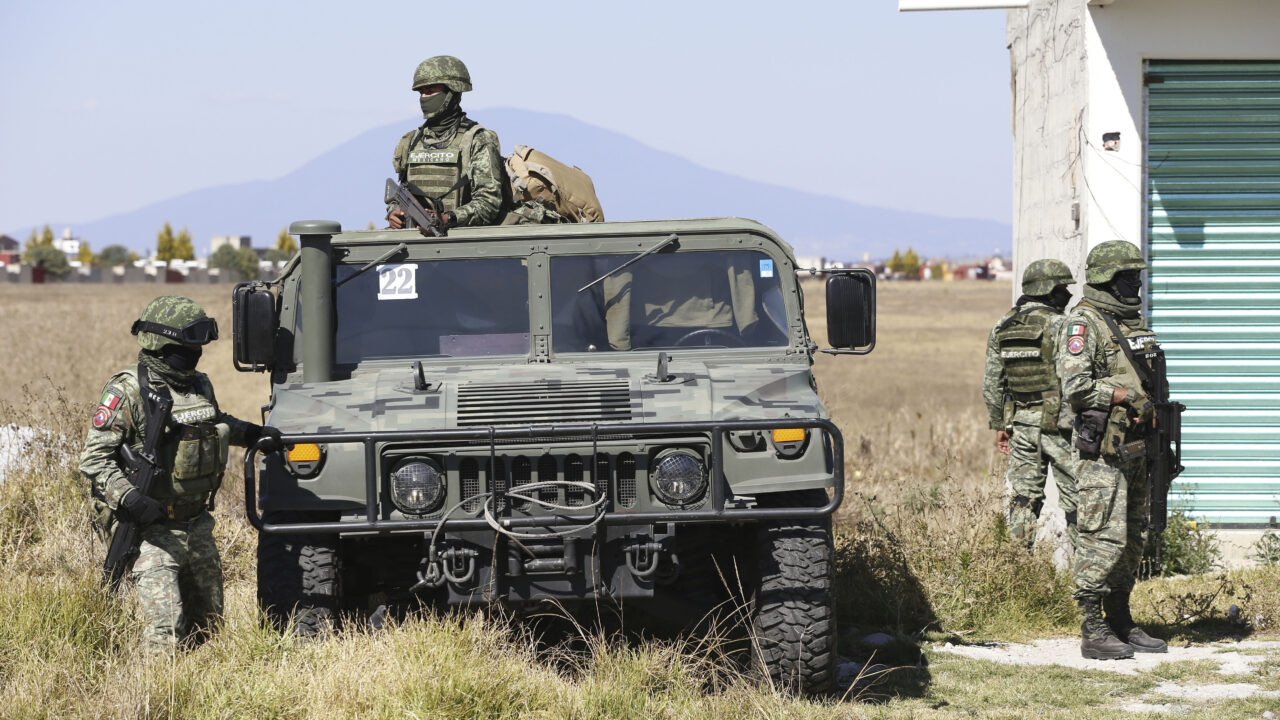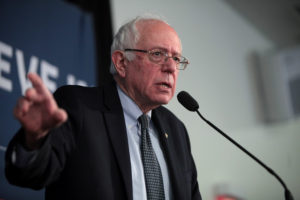The US Spends Millions in Foreign ‘Aid’ to Drive Global Drug War
A new report details the scope of spending on drug war programs that undermine other US foreign aid goals. Mexican military personnel at a checkpoint outside the Almoloya prison where Ovidio Guzman, the son of imprisoned drug lord Joaquin “El Chapo” Guzman, was being held in Villa de Almoloya de Juarez, Mexico, Friday, Jan. 6, 2023. (AP Photo/Ginnette Riquelme)
Mexican military personnel at a checkpoint outside the Almoloya prison where Ovidio Guzman, the son of imprisoned drug lord Joaquin “El Chapo” Guzman, was being held in Villa de Almoloya de Juarez, Mexico, Friday, Jan. 6, 2023. (AP Photo/Ginnette Riquelme)
The United States, Europe and other rich nations give hundreds of millions of dollars in foreign “aid” to fund the devastating global drug war, details a new report by Harm Reduction International (HRI). Rather than reducing poverty and hunger, or improving health and education, this money is instead bankrolling police and militaries that violate human rights and add to crises faced by poor and marginalized communities.
HRI is urging the US and other governments to “stop using money from their limited aid budgets” to support policies that harm and kill people who use drugs.
The report, “Aid for the War on Drugs,” finds that from 2012-2021, 30 donor countries spent $974 million in international aid funding for “narcotics control.” This includes at least $70 million spent in countries that have the death penalty for drug charges.
Over 10 years, the US was by far the biggest donor, providing over half of all global drug-war funding at $550 million. Next came the European Union ($282 million), Japan ($78 million), the United Kingdom ($22 million), Germany ($12 million), Finland ($9 million) and South Korea ($8 million).
Some countries, like the UK, are spending less money than previously on foreign drug-war projects. But others are spending more. The US, for example, hugely increased its drug-war aid funding early in President Joe Biden’s tenure.
“Racist and colonial dynamics continue to this day, with wealthier governments, led by the US, spending billions of taxpayer dollars around the world to bolster or expand punitive drug control regimes and related law enforcement.”
A total of 92 countries received this aid for “narcotics control” in the period covered by the report. The biggest recipients were Colombia ($109 million), Afghanistan ($37 million), Peru ($27 million), Mexico ($21 million), Guatemala and Panama ($10 million each). More foreign aid is spent on the drug war than on projects concerning school feeding, food security, early childhood education, labor rights or mental health.
The funding for 16 governments that execute people for drug convictions is particularly grotesque. The report explains, for example, how US aid money went to Indonesia in 2021 to support a “counter narcotics training program”—the same year the country issued a record 89 death sentences to people for drugs. Japan, meanwhile, sent millions to Iran to fund drug-detection dog units—while Iran executed at least 131 people for drugs in 2021.
“There is a long history of drug policy being used by world powers to strengthen and enforce their control over other populations, and target specific communities,” the report states. “Racist and colonial dynamics continue to this day, with wealthier governments, led by the US, spending billions of taxpayer dollars around the world to bolster or expand punitive drug control regimes and related law enforcement.”
“These funding flows are out of pace with existing evidence, as well as international development, health, and human rights commitments, including the goal to end AIDS by 2030,” it continues. “They rely on and reinforce systems that disproportionately harm Black, Brown and Indigenous people worldwide.”
Severe harms this funding inflicts on people who use drugs include transmission of HIV and other blood-borne diseases when sterile syringes are unavailable; the harms of incarceration, police violence and extrajudicial killings; and the denial of health care and other services, to name a few.
The global racist impact is also clear—from Brazil’s grossly disproportionate incarceration of Black people on drug charges, to “crop eradication” and police violence targeting Indigenous farmers in coca growing regions of Colombia.
Catherine Cook, HRI’s sustainable financing lead, suggested some ways that people in drug-war donor countries can take action.
“Voters and citizens can keep pressure on governments through local and particularly through international processes,” she told Filter. “[With respect to] the latter, for example, there is an opportunity to engage in the UN Commission on Narcotic Drugs 2024 mid-term review of the 2019 Ministerial declaration.”
“In calling for decolonized drug policy,” she added, “it’s important to shine a light on the funding flows for punitive policies. Voters and citizens can call on their governments to be more transparent and accountable in their aid spending and demand they do not act hypocritically.”
On that point, she noted how “some donor countries, including the US and several European countries, continue to support the war on drugs in aid-recipient countries while pursuing more effective, non-punitive, health-based policies domestically.”
As the report explains, US drug-war spending undermines other US foreign aid projects.
While the US is the world’s top drug-war donor, HRI’s report shows how the numbers have fluctuated. In 2021 the country spent $301 million in aid for “narcotics control” (though even that is less than a third of what it spends on the global drug war through other initiatives). This aid figure was a massive increase from the $31 million given the prior year. But we know little about how the money was spent. Colombia was the biggest recipient, but the researchers couldn’t find more details, because data were redacted to protect the “health and security of implementing partners, and the national interest of the United States.”
US federal law essentially coerces countries that try to end the drug war by denying them aid funding. The 2003 Foreign Relations Authorizations Act, signed into law by President George W. Bush, largely prohibits foreign aid to countries that are considered to host large-scale drug transit or production, and to be making little effort to end the illicit trade. In 2022, this group, termed the “Majors List,” included Afghanistan, The Bahamas, Belize, Bolivia, Burma, Colombia, Costa Rica, the Dominican Republic, Ecuador, El Salvador, Guatemala, Haiti, Honduras, India, Jamaica, Laos, Mexico, Nicaragua, Pakistan, Panama, Peru, and Venezuela.
As the report explains, US drug-war spending undermines other US foreign aid projects. The US Agency for International Development (USAID), for example, provides services for vulnerable populations, including people who use drugs, by addressing stigma and discrimination. And it funds harm reduction programs in countries such as Vietnam (though not syringe service programs).
Countries can easily increase funding for harm reduction by making even small cuts to their drug enforcement budgets, HRI noted in a previous report. For example, researchers in Thailand found the country could cover the cost of HIV prevention programs for drug users for two years, using just 1 percent of its national drug enforcement budget. And Indonesia would save $31 million each year in prison-related costs by decriminalizing drug use and possession—double the estimated amount needed to fully fund harm reduction programs.
Your support matters…Independent journalism is under threat and overshadowed by heavily funded mainstream media.
You can help level the playing field. Become a member.
Your tax-deductible contribution keeps us digging beneath the headlines to give you thought-provoking, investigative reporting and analysis that unearths what's really happening- without compromise.
Give today to support our courageous, independent journalists.


You need to be a supporter to comment.
There are currently no responses to this article.
Be the first to respond.